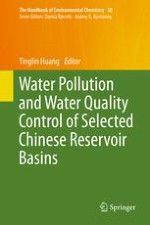2016 | OriginalPaper | Chapter
Impact of Contaminated Sediment on the Water Quality of Typical Reservoirs
Authors : Jinlan Xu, Chao Xia, Zizhen Zhou, Tinglin Huang
Published in: Water Pollution and Water Quality Control of Selected Chinese Reservoir Basins
Publisher: Springer International Publishing
Activate our intelligent search to find suitable subject content or patents.
Select sections of text to find matching patents with Artificial Intelligence. powered by
Select sections of text to find additional relevant content using AI-assisted search. powered by
